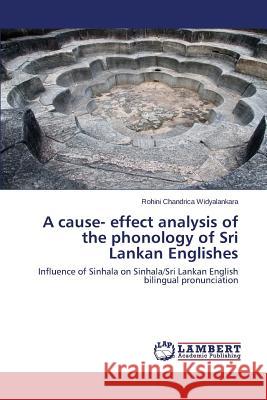A Cause- Effect Analysis of the Phonology of Sri Lankan Englishes » książka
A Cause- Effect Analysis of the Phonology of Sri Lankan Englishes
ISBN-13: 9783659606557 / Angielski / Miękka / 2014 / 172 str.
Postcolonial Englishes are a rich source on cross linguistic dynamics in contact situations where English is the superstrate. Sinhala is a minority language of the world and is spoken by a population of 15,173,820 in Sri Lanka. The language specific rankings of markedness constraints in the phonological grammar and conventions governing grapheme to phoneme conversion rules of Sinhala result in the dichotomy of transfer versus inhibition of the source language phonology. The Constraint Fluctuation Hypothesis recognizes that the reranking of constraints of a donor language is not a homogeneous process. Thus within the typology of Sri Lankan Englishes the pronunciation of the Standard variety has gained endonormative stabilization and codification while Other varieties flout a multitude of norms set down by the standard. English loanword assimilation paradigms which add to the corpus of the thadbhawa wordstock of Sinhala and current practices in loanword usage in Sinhala print media scaffold further evidence that transfer of the assimilated phonological contours too is a causal factor. The theoretical basis of this book recruits Markedness and Expense of Effort during analysis.











